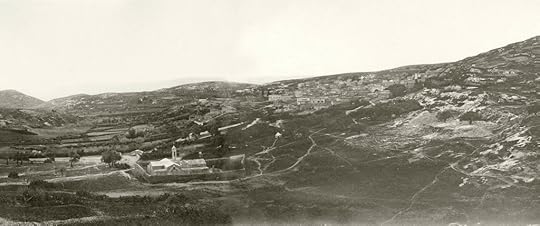A Yeshua’s Cat Glossary K-V
This is the 3rd and last blog entry dedicated to clarifying lesser-known words and ideas from Yeshua’s Cat. This installment looks at words beginning with K-V. Scroll down to see the first two glossaries, with words A-J. As before, the numbers in parentheses indicate the page in the paperback edition where the word first appears. Let me know if I’ve overlooked anything!
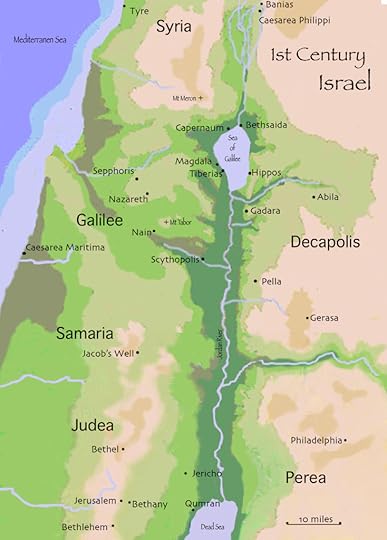
1st C Israel, map by C. L. Francisco
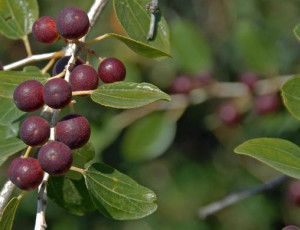
Photo by Avinoam Danin
* kanari berries (p. 83) The kanari berry comes from the Ziziphus spina christi tree, also known as the rimin or kanari tree, which is widespread throughout much of Israel. Kanari berries are slightly less than 1 inch in diameter, round and reddish, with a single large seed. The fruit is sweet when ripe and rich in vitamin C. Traditionally this tree has been considered the source of Jesus’ crown of thorns.
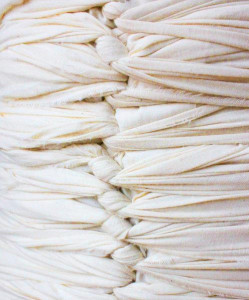 * linen and spices (p. 66) This is a reference to the burial practices of ancient Israel, where the deceased’s body was wrapped in linen together with quantities of spices before being laid in a tomb.
* linen and spices (p. 66) This is a reference to the burial practices of ancient Israel, where the deceased’s body was wrapped in linen together with quantities of spices before being laid in a tomb.
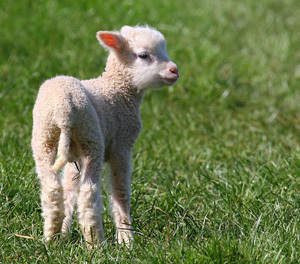 * Little Lamb (p. 66) This term as it appears in chapter 5:41 of Mark’s Gospel is spoken in the original Aramaic, “Talitha.” In Aramaic this was a term of endearment for a female child, from the Aramaic word taleh, for “lamb.” I used what was probably its familiar meaning in Aramaic—“little lamb.”
* Little Lamb (p. 66) This term as it appears in chapter 5:41 of Mark’s Gospel is spoken in the original Aramaic, “Talitha.” In Aramaic this was a term of endearment for a female child, from the Aramaic word taleh, for “lamb.” I used what was probably its familiar meaning in Aramaic—“little lamb.”
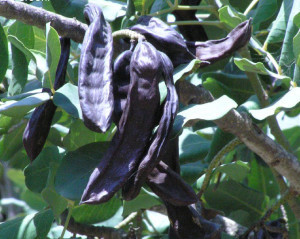 * locust pods (p. 83) Locust pods are the pods of the Ceratonia siliqua, or carob tree. Although both pods and seeds are rich in nutrients, in Jesus’ time they were scorned by the wealthy. It is these “husks” that were fed to the pigs in the parable of the Prodigal Son.
* locust pods (p. 83) Locust pods are the pods of the Ceratonia siliqua, or carob tree. Although both pods and seeds are rich in nutrients, in Jesus’ time they were scorned by the wealthy. It is these “husks” that were fed to the pigs in the parable of the Prodigal Son.
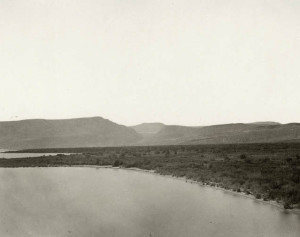
Looking across the shore of the Sea of Galilee where Magdala once stood
* Magdala (p. 100) Magdala, located midway up the western shore of the Sea of Galilee, was one of the most important towns in Galilee before Tiberius was built in 18 CE. Its fishing industry, fertile land, clear springs and strategic location at the intersection of several important roads made it a major center of commerce. Mary, Jesus’ disciple, was from Magdala.
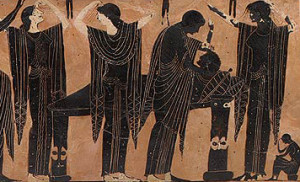 * mourning women (p. 64) In ancient Israel and much of the Ancient Near East, trained “wise” women provided public lamentation for the dead. They were hired particularly by wealthy families to express the depth of their grief. Through all levels of society, grief was predominantly expressed by women, both in the family and professionally. Hired mourners might be considered catalysts, helping others to express their grief freely.
* mourning women (p. 64) In ancient Israel and much of the Ancient Near East, trained “wise” women provided public lamentation for the dead. They were hired particularly by wealthy families to express the depth of their grief. Through all levels of society, grief was predominantly expressed by women, both in the family and professionally. Hired mourners might be considered catalysts, helping others to express their grief freely.
* Nazareth (p. 18) Nazareth was the hill-country village in central Galilee where Jesus grew up and his family continued to live.
* New Year (p. 74) see “Feast of Blowing of Trumpets”
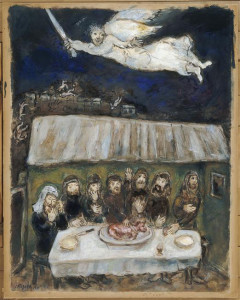
Marc Chagall’s “Passover”
* Passover (p. 218) Passover celebrates Israel’s deliverance from captivity in Egypt. It refers to the 10th of the plagues God visited on Egypt, in which the firstborn males of all Egyptian people and cattle were killed. Hebrews marked their doorposts with the blood of a freshly-killed lamb, so that the spirit of God would know to “pass over” their homes and spare their lives. Passover is also called the Feast of Unleavened Bread. Jews eat only unleavened bread during Passover to commemorate their sudden departure from Egypt, when they left so quickly that the bread had no time to rise. Passover was one of the three great pilgrimage festivals of Israel, when all who were able went to worship and make sacrifices at the Jerusalem Temple.
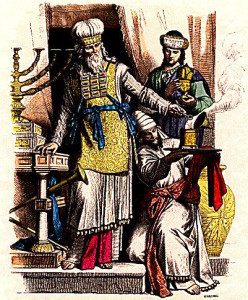 * priests (p. 139) Priests in the days of the Second Temple were primarily responsible for directing religious services, performing sacrifices, and mediating the blessing of God to the people. Unfortunately, political and financial pressure was often brought to bear on Temple priests, and not all resisted. Like any group, the priests of Jesus’ time included both godly and corrupt men, as well as merely ambitious men who closed their hearts to Jesus’ message in order to protect their own positions. Some opposed him for sincere reasons of their own, and some supported him.
* priests (p. 139) Priests in the days of the Second Temple were primarily responsible for directing religious services, performing sacrifices, and mediating the blessing of God to the people. Unfortunately, political and financial pressure was often brought to bear on Temple priests, and not all resisted. Like any group, the priests of Jesus’ time included both godly and corrupt men, as well as merely ambitious men who closed their hearts to Jesus’ message in order to protect their own positions. Some opposed him for sincere reasons of their own, and some supported him.
* rock rabbit (p. 10), see “conies”
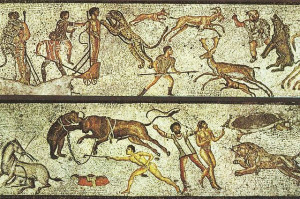
Mosaic of typical Roman Games
* Roman games (p. 40) James’ reference here was to the many trained and exotic animals imported into Roman cities to perform, fight, and be killed in coliseums for the entertainment of the populace.
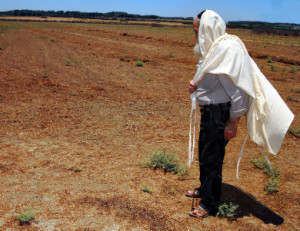 * sabbatical year (p. 74) The sabbatical year was one element of the law delivered by God to Moses on Mt. Sinai as a condition of the Hebrews’ occupation of the Promised Land. The sabbatical law required that every seventh year fields should lie fallow, and no harvests should be gathered, whether in the fields, groves or vineyards. Any food the land produced was free to all comers, to take as needed, but not to harvest and store. Personal debts due during the sabbatical year were also forgiven.
* sabbatical year (p. 74) The sabbatical year was one element of the law delivered by God to Moses on Mt. Sinai as a condition of the Hebrews’ occupation of the Promised Land. The sabbatical law required that every seventh year fields should lie fallow, and no harvests should be gathered, whether in the fields, groves or vineyards. Any food the land produced was free to all comers, to take as needed, but not to harvest and store. Personal debts due during the sabbatical year were also forgiven.
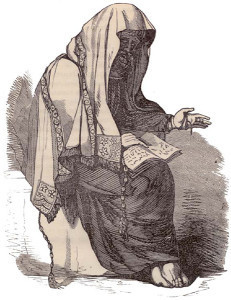 * scribes and scholars (p. 139) Scribes and scholars are essentially the same here, men who studied and interpreted Jewish law—lawyers and judges. Jesus’ radical interpretation of the law, not to mention his claim to have authority over it, threatened the whole institution of Jewish law as they knew it. Over the years since the Jews’ return from Babylonian captivity, concern with following the minutiae of the law had increased dramatically, and a complex hierarchy of religious power and influence had evolved, with all the financial benefits such a system implied.
* scribes and scholars (p. 139) Scribes and scholars are essentially the same here, men who studied and interpreted Jewish law—lawyers and judges. Jesus’ radical interpretation of the law, not to mention his claim to have authority over it, threatened the whole institution of Jewish law as they knew it. Over the years since the Jews’ return from Babylonian captivity, concern with following the minutiae of the law had increased dramatically, and a complex hierarchy of religious power and influence had evolved, with all the financial benefits such a system implied.
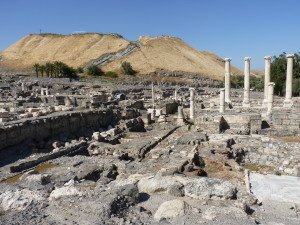
Scythopolis, photo Ricardo Tulio Gandelman
* Scythopolis (p. 81) Scythopolis was a Greco-Roman city founded by Ptolemaic Greeks below the hill of the abandoned biblical city Beth-Shean. Scythopolis was the only city of the Decapolis to be located on the west bank of the Jordan River.
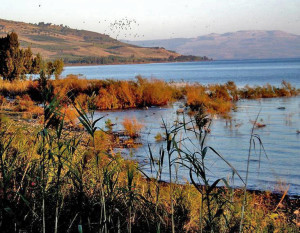 * Sea of Galilee (p. 24) The Sea of Galilee is a large landlocked body of water more properly termed a lake, located roughly midway down the Jordan River’s flow. It is also known as the Lake or Sea of Gennesaret, Lake Tiberias, and Lake Kinneret. In Jesus’ time it supported a thriving fishing industry, as well as having Galilee’s capital city, Tiberias, located on its western shore. The Sea of Galilee has always been subject to sudden violent winds and wind-driven waves, especially at night.
* Sea of Galilee (p. 24) The Sea of Galilee is a large landlocked body of water more properly termed a lake, located roughly midway down the Jordan River’s flow. It is also known as the Lake or Sea of Gennesaret, Lake Tiberias, and Lake Kinneret. In Jesus’ time it supported a thriving fishing industry, as well as having Galilee’s capital city, Tiberias, located on its western shore. The Sea of Galilee has always been subject to sudden violent winds and wind-driven waves, especially at night.
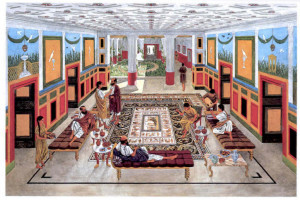
Artist’s reconstruction of a villa in rebuilt Sepphoris
* Sepphoris (p. 45) Sepphoris was the Romanized capital of Galilee before Antipas built the city of Tiberias. Around the time of Herod the Great’s death it had been all but razed to the ground by Galilean rebels and then by Roman troops in reprisal. Only five miles from Nazareth, it was rebuilt as a model of Greco-Roman beauty during the years when Jesus was growing up.
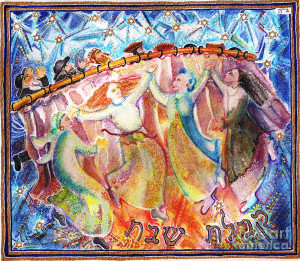
“Kabbalat Shabbat Jerusalem,” by Chana Helen Rosenberg
* Shabbat (p. 34) In Jewish tradition the Shabbat was the week’s day of rest, set aside and made holy by God, when all labor was forbidden. Over time extremely detailed interpretations of what was and was not “labor” developed. Jesus was critical of this mass of legal minutiae that obscured the true purpose of the day: taking time to rest from hard labor and worship God.
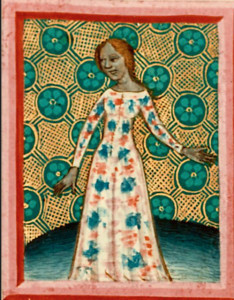
“The Shulamite,” from a medieval manuscript
* Shulamite (p. 5) The Shulamite woman mentioned in Song of Songs 6:13, is generally thought to be the bride who speaks and is spoken of throughout the Song of Songs. She is described as “black and comely.”
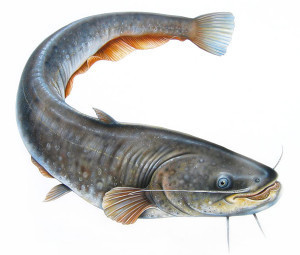 * snake fish (p. 130) The “snake” fish that Mari mentions was probably a catfish, a species common in the Sea of Galilee, but considered unclean because it had no scales and thus resembled a snake more than a fish (“Anything living in the water that does not have fins and scales is to be detestable to you.” Lev 11:12). Apparently this same association of catfish with snakes was common among a variety of ancient Mesopotamian and Arabic peoples.
* snake fish (p. 130) The “snake” fish that Mari mentions was probably a catfish, a species common in the Sea of Galilee, but considered unclean because it had no scales and thus resembled a snake more than a fish (“Anything living in the water that does not have fins and scales is to be detestable to you.” Lev 11:12). Apparently this same association of catfish with snakes was common among a variety of ancient Mesopotamian and Arabic peoples.
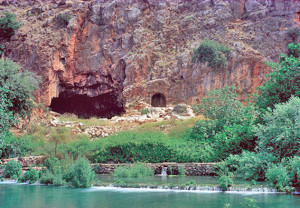 * springs of the Descender (p. 195) The Jordan River has four main sources flowing from the mountains near the junction of Israel, Jordan and Syria. The easternmost of these sources is the spring above Banias, or Caesarea Philippi.
* springs of the Descender (p. 195) The Jordan River has four main sources flowing from the mountains near the junction of Israel, Jordan and Syria. The easternmost of these sources is the spring above Banias, or Caesarea Philippi.
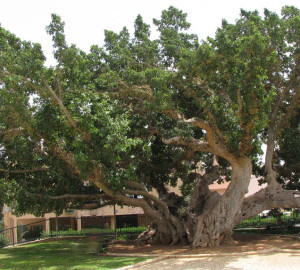 * sycamore fig (p. 210) The sycamore fig (ficus sycamorus) is a large tree common to low-lying areas of Israel, often growing as high as sixty feet. Its fruit is edible, but only if each fig is slashed approximately three days before harvesting.
* sycamore fig (p. 210) The sycamore fig (ficus sycamorus) is a large tree common to low-lying areas of Israel, often growing as high as sixty feet. Its fruit is edible, but only if each fig is slashed approximately three days before harvesting.
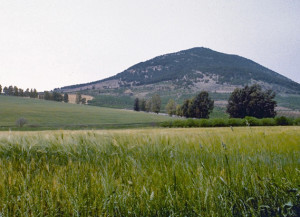 * Tabor (p. 69) Mt. Tabor (approximately 2000 feet in elevation) is a forested mountain in southern Galilee, located at the eastern end of the Jezreel Valley.
* Tabor (p. 69) Mt. Tabor (approximately 2000 feet in elevation) is a forested mountain in southern Galilee, located at the eastern end of the Jezreel Valley.
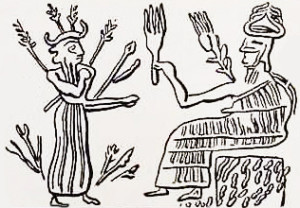
Ancient Mesopotamian seal with Tammuz standing before the Grain Goddess
* Tammuz (p. 167) Tammuz (or Dumuzi) was a Mesopotamian god who was the husband of the goddess Ishtar (or Inanna). His worship extended across most of the ancient Near East. As a manifestation of rising and dying vegetation, his death was mourned every summer at the height of the summer heat and drought. His new birth was celebrated with the spring rains. Both his goddess wife and the women of the region lamented the death of the beloved god who represented the familiar roles any man might play: lover, husband, brother, and son.
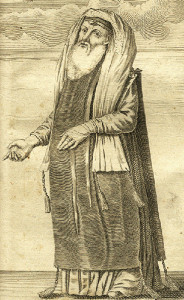 * teachers (p. 41) “Teachers” is the word I chose to represent the men known as “Pharisees” in many New Testament passages. This word emphasizes their role as educators in the individual houses of prayer, as well as the many things they had in common with Jesus, rather than the negative associations the word “Pharisee” inspires. Jesus was not always critical of Pharisees, nor were they a homogeneous group.
* teachers (p. 41) “Teachers” is the word I chose to represent the men known as “Pharisees” in many New Testament passages. This word emphasizes their role as educators in the individual houses of prayer, as well as the many things they had in common with Jesus, rather than the negative associations the word “Pharisee” inspires. Jesus was not always critical of Pharisees, nor were they a homogeneous group.
* Ten Cities (p. 155), see “Decapolis”
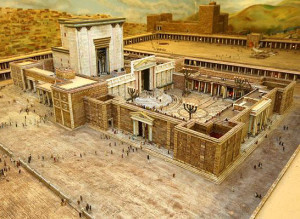 * Temple (p. 8) The Temple of Jesus’ time was Herod’s Temple, completed in 19 BCE (except for outbuildings and details). The Jerusalem Temple was at the heart of Israel’s religious life; it was there that sacrifices were offered and priests led the people in worship. Herod’s Temple was actually a reconstruction of the Second Temple, completed in 516 BCE after the Babylonian exile. Solomon’s Temple was the first temple, built early in the 1st millennium BCE, and destroyed by Nebuchadnezzar II in 587.
* Temple (p. 8) The Temple of Jesus’ time was Herod’s Temple, completed in 19 BCE (except for outbuildings and details). The Jerusalem Temple was at the heart of Israel’s religious life; it was there that sacrifices were offered and priests led the people in worship. Herod’s Temple was actually a reconstruction of the Second Temple, completed in 516 BCE after the Babylonian exile. Solomon’s Temple was the first temple, built early in the 1st millennium BCE, and destroyed by Nebuchadnezzar II in 587.
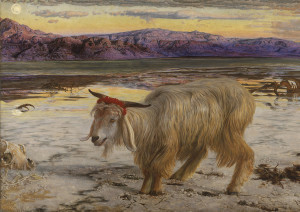
“The Scapegoat,” by Wm Holman Hunt
* Temple scapegoat (p. 75) The term “scapegoat” comes from an ancient Hebrew tradition, begun during the Exodus, when, on the Day of Atonement, the high priest laid the sins of Israel on the head of a goat and drove the goat out into the wilderness to die, thus removing Israel’s sins from their midst. In later years the goat was killed once he was well away from the city, perhaps to prevent him returning again with his burden of sin.
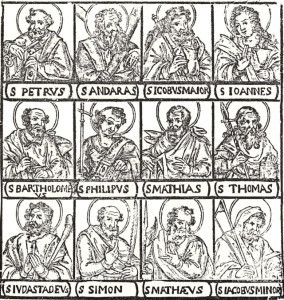 * the Twelve (p. 136) “The Twelve” was a common name for the twelve apostles chosen by Jesus as his special companions.
* the Twelve (p. 136) “The Twelve” was a common name for the twelve apostles chosen by Jesus as his special companions.
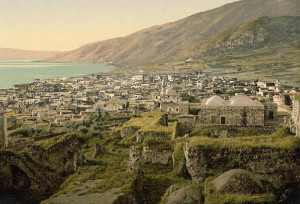 * Tiberias (p. 119) Tiberias was Galilee’s capital city, founded in 20 CE by Herod Antipas to replace Sepphoris. Unfortunately much of the city was built on the site of an old cemetery, and many Jews refused to live there. In the end, Antipas bribed people to relocate to Tiberias. It became a thriving city in time, replacing Magdala as the foremost urban trading center on the west shore of the Sea of Galilee.
* Tiberias (p. 119) Tiberias was Galilee’s capital city, founded in 20 CE by Herod Antipas to replace Sepphoris. Unfortunately much of the city was built on the site of an old cemetery, and many Jews refused to live there. In the end, Antipas bribed people to relocate to Tiberias. It became a thriving city in time, replacing Magdala as the foremost urban trading center on the west shore of the Sea of Galilee.
* Village of Nahum (p. 29), see “Capernaum”
.

.
.

